Arctic Fox
Have you ever heard of a fox that can change colors? And it is roughly the size of a house cat? We’re talking about the Arctic fox, one of nature’s most fascinating creatures spotted in the Arctic. If it is your first time visiting the Arctic, you might spot these small creatures in white, brown, grey, or even a mix of these colors, depending on the season. Regardless of the color, they are among the highlights of our expeditions, and seeing one is a special attraction of our Arctic journeys.
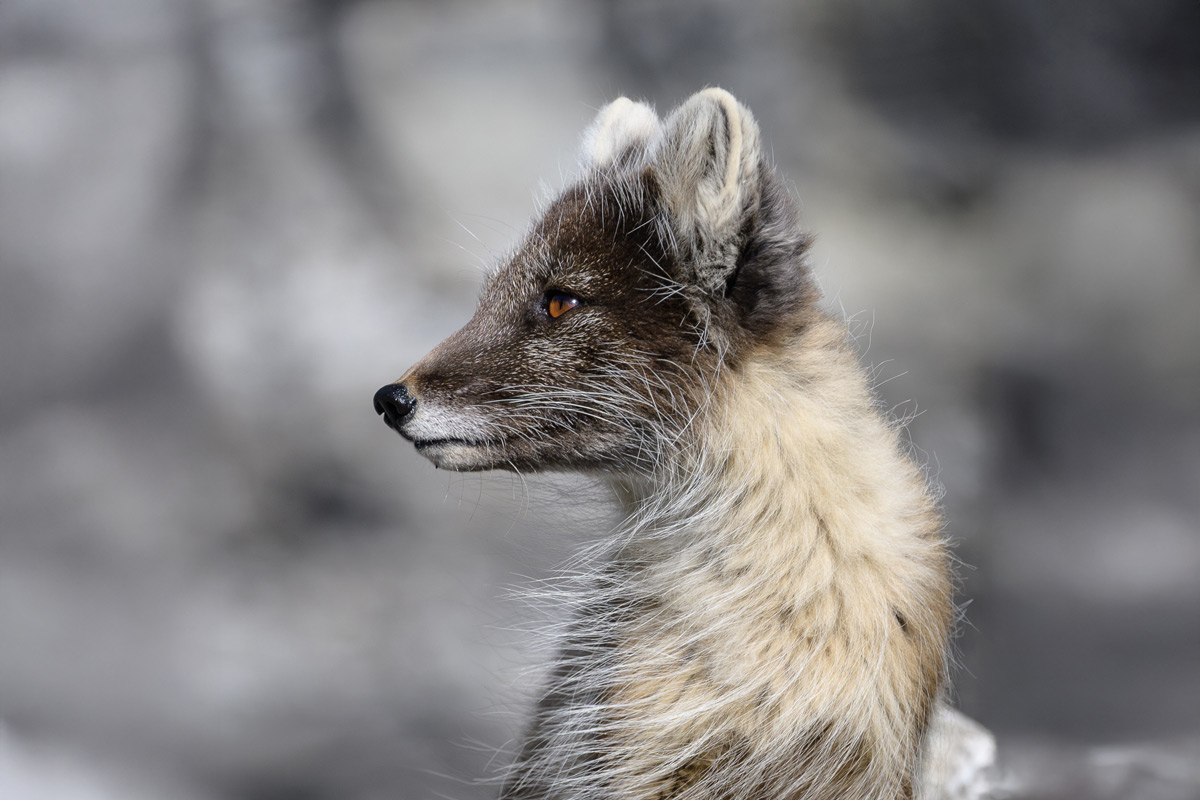
Imagine visiting Svalbard and spotting one of these creatures?
Arctic Fox Quick Overview
| Scientific Name | Vulpes lagopus |
| Population | Estimated at 700,000–1 million worldwide |
| Regions | Arctic tundra and coastal areas of the Northern Hemisphere |
| Destinations | Jan Mayen, Iceland, Canada, Svalbard, Greenland, Norway |
| Average Length | ~55-60 cm (2 ft) body length, plus ~30 cm tail (1 ft) |
| Average Weight | ~2.5-5 kg (5.5-11 lbs) |
| Diet Habits | Winter: Relies on scavenging remains from polar bear kills, primarily seal blubber; Summer: Hunts lemmings, rodents, birds, eggs, and fish; stores surplus food for winter |
Questions Guests Ask About the Arctic Fox
How Does Their Colouring Serve as a Defence Against Predators?
Arctic foxes, also known as snow foxes or polar foxes can change their fur colour twice a year to protect themselves from predators. During the frigid winter months, their fur colors turn pristine white, providing camouflage against the snow-covered landscape. As summer approaches, the fox sheds its winter coat and dons a mottled brown or grey fur, blending seamlessly with the rocky tundra. Their ability to change color is a crucial survival strategy, helping these animals evade predators like polar bears, wolves, golden eagles, and humans. Humans have hunted these foxes for centuries for their luxurious fur, particularly the rare blue-grey variety.
What Do They Eat?
The blue arctic fox’s diet varies depending on food availability, seasonal changes, and social interactions. In winter, they adapt their hunting methods to survive food scarcity as opportunistic feeders by scavenging, whereas in summer, they hunt a variety of prey, including lemmings, birds, and fish.
Why Is Their Size Ideal for Survival in the Arctic Environment?
Despite its incredible adaptability, the blue fox size is relatively small, perfectly proportioned for its hostile environment. Measuring around 60 cm in body length and weighing 2.5 to 5 kg, it’s significantly smaller than its red fox relative. Its short snout, rounded ears, and compact body minimise heat loss, making it well-suited for the frigid Arctic region’s climate. Their tail, which is about 33 cm long, helps maintain balance and is also used as a blanket to warm them during sleep.
To thrive in this harsh environment, the snow fox coexists with a diverse range of other wildlife, each with unique sizes and lifestyles. Here are some examples of creatures that have adapted to the Arctic environment and that you might encounter on our expeditions:
- Arctic Hare: Smaller than foxes, these fluffy creatures weigh around 2-5 kg.
- Svalbard Reindeer: Majestic arctic tundra animal weighing up to 90 kg.
- Beluga Whale: Large marine mammals can weigh over 1,600 kg.
- Long-tailed Jaeger: Predatory birds weighing around 0.5 kg, soar through the Arctic skies.
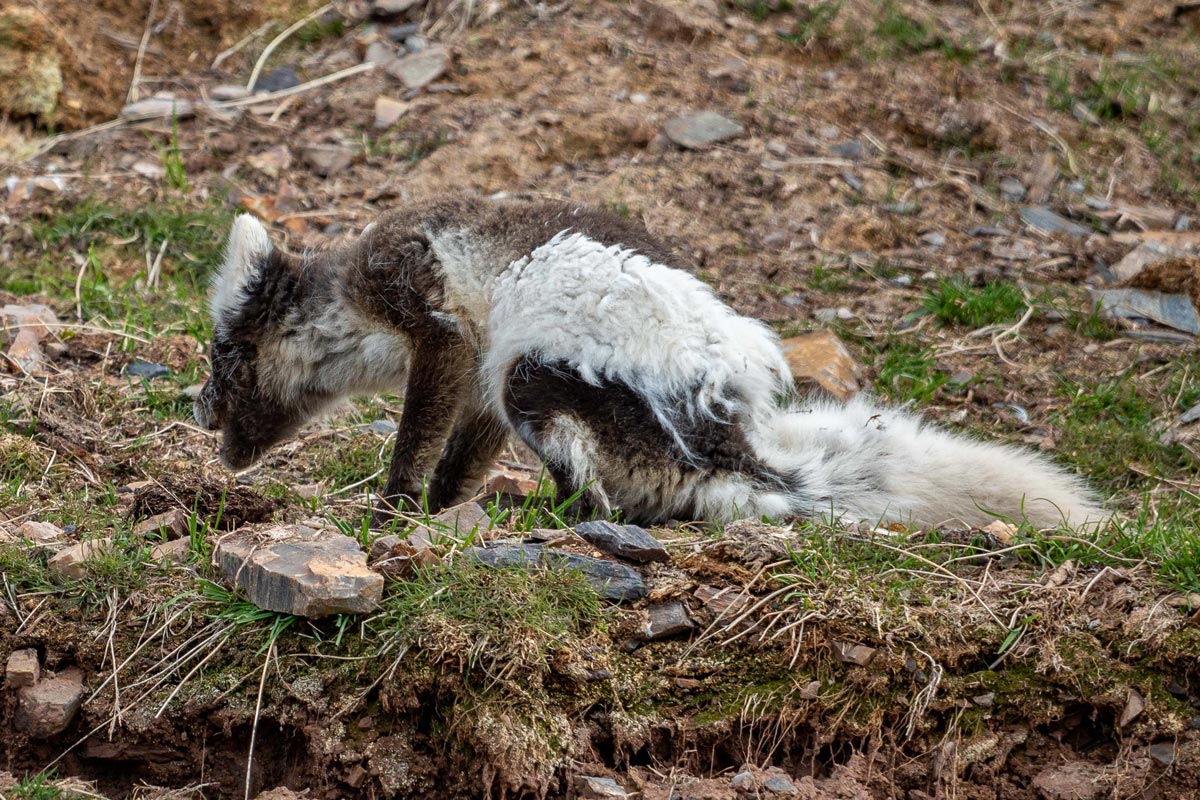
They change fur depending of the season
What Makes the Life of Arctic Foxes Unique?
While these arctic animals are often solitary hunters, they form strong family bonds during the breeding season. They are monogamous animals, often forming lifelong pairs. The male arctic fox, called a ‘dog’, forms a pair bond with a female, known as a ‘vixen’. These foxes give birth to litters of ‘kits’ who reach maturity after nine to ten months.
What is the Average Lifespan of an Arctic fox?
The Arctic fox’s lifespan is relatively short, with an average life expectancy of around 3-4 years in the wild. However, some may live up to 10 years. Their primary dangers are scarcity of prey, climate change, habitat destruction, and human activities.
Do Arctic Foxes Live In Antarctica?
No, those animals are native to the Arctic region and do not inhabit Antarctica.
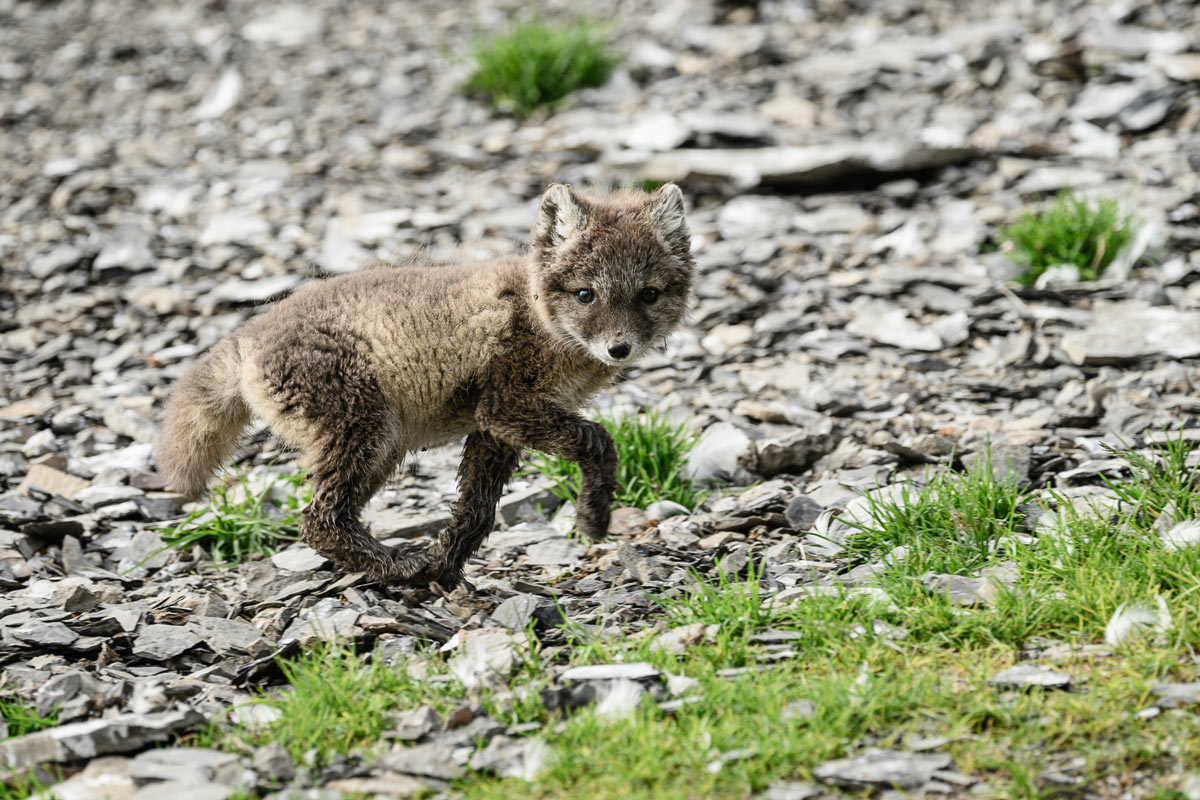
Pups are typically born during the spring months, from April to June
How Many of These 10 Arctic Fox Facts Did You Already Know?
- They appear in two distinct colour morphs: white and blue.
- During summer, their diet is concentrated on mice, lemmings and arctic hares.
- All foxes are carriers of the recessive or sleeping rabies virus that may come into an acute outbreak if the fox, for example, is weakened due to a lack of food.
- Access to reindeer carcasses is the primary factor influencing the population dynamics of Arctic foxes in Svalbard.
- The white fox has probably undergone the same evolutionary development as the polar bear, which is a white variant of the American brown bear.
- The Arctic fox furry coat is the thickest of any Arctic mammal, keeping them warm in temperatures as low as -50°C (-58°F).
- Their sound includes high-pitched barks, chirps, and even noises reminiscent of giggles.
- During the summer, these animals usually sport a beautiful dark and greyish-brown coat that helps them blend into their environment.
- Their key characteristics include short ears, a fluffy tail, and fur-covered paws, all helping them survive in the cold.
- Within their food web, these animals act as both predators, targeting small creatures, and scavengers, consuming remnants left by larger predators such as polar bears.
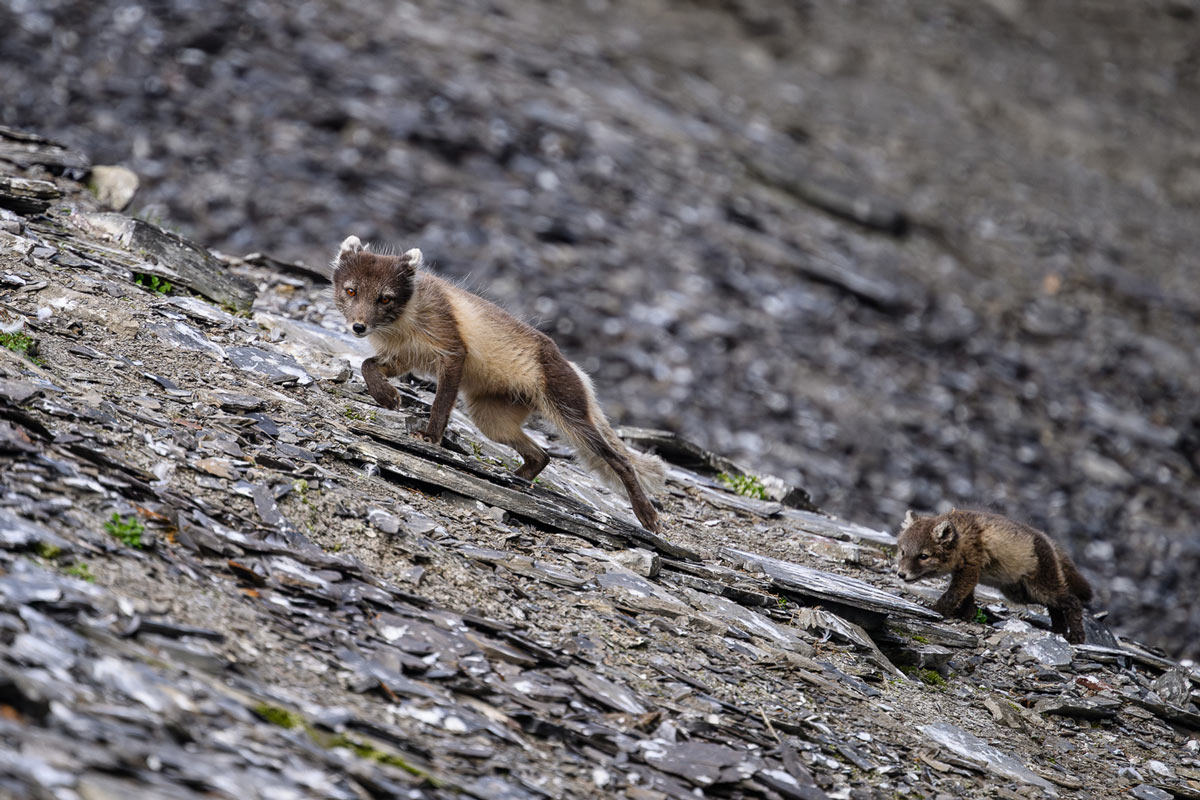
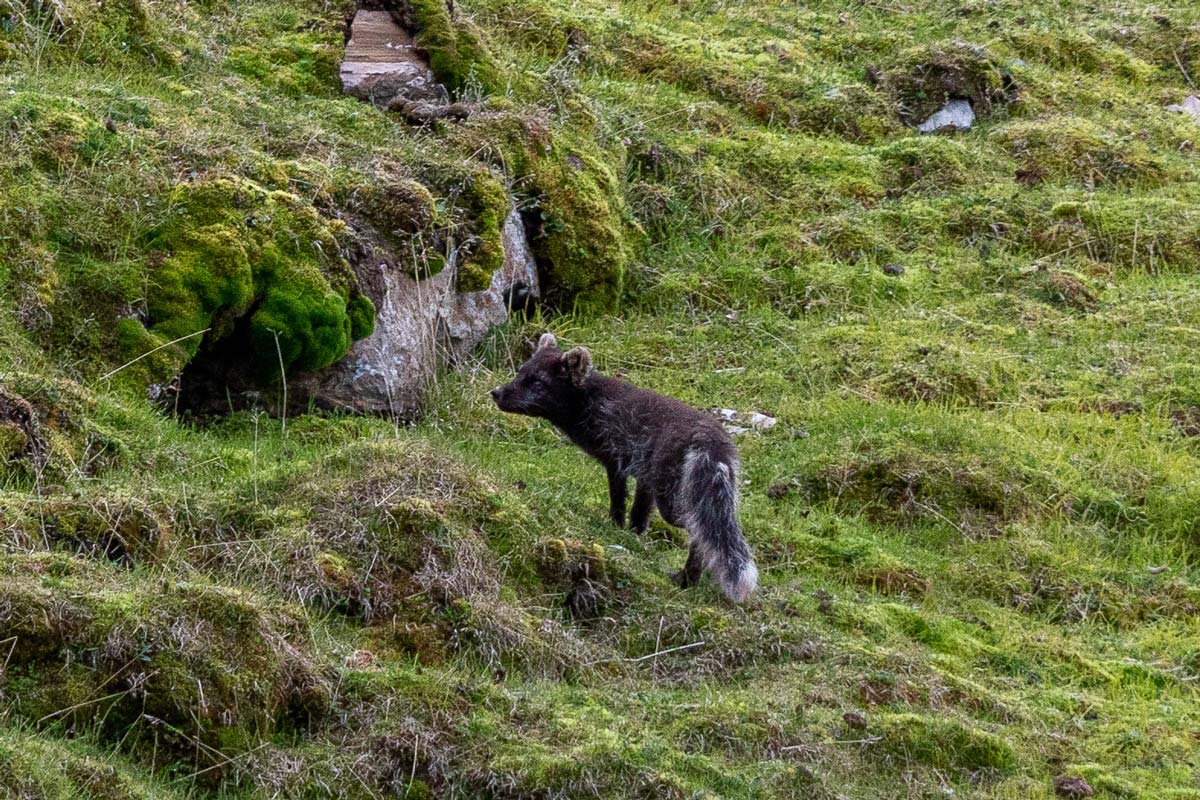
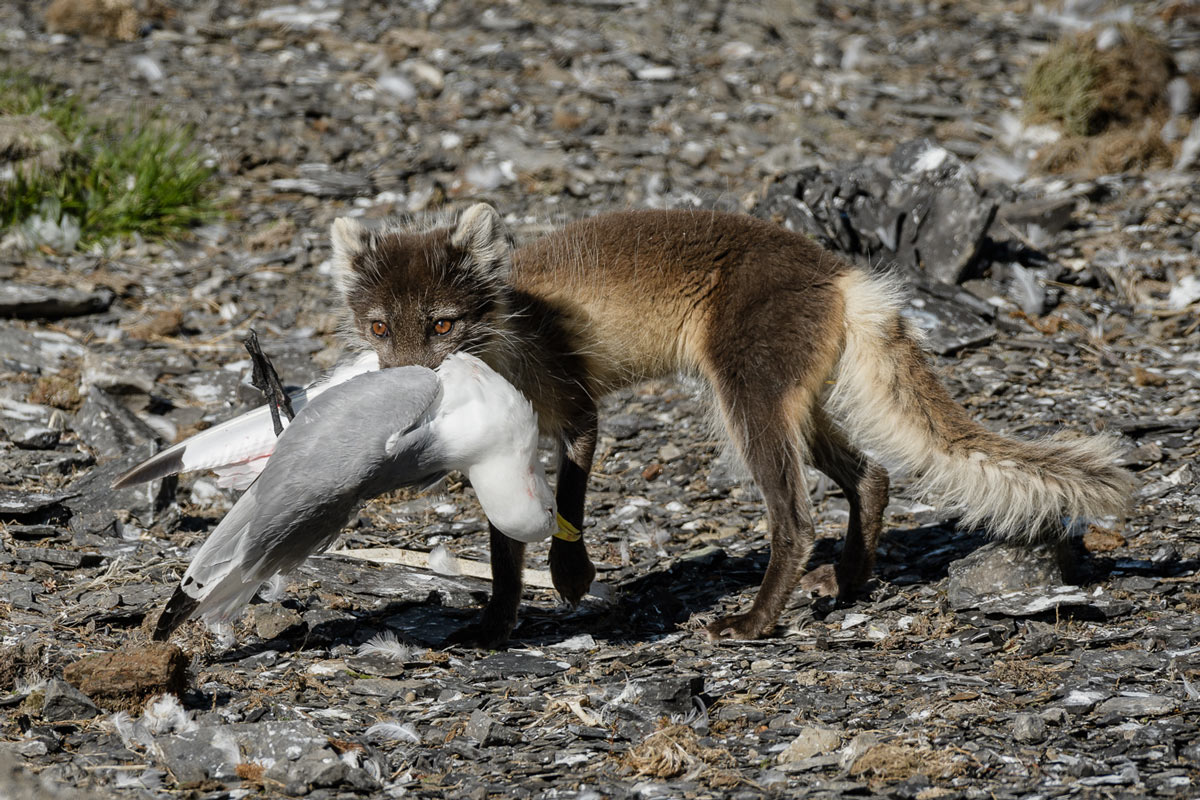

Want to see the Arctic Fox for yourself?
Reach out to our team to learn more about our voyages any time!
